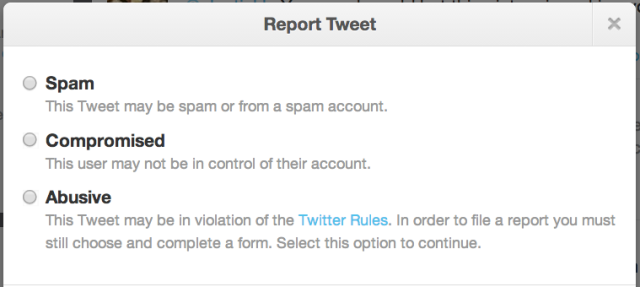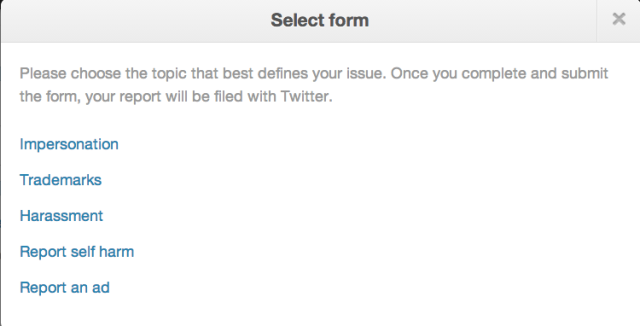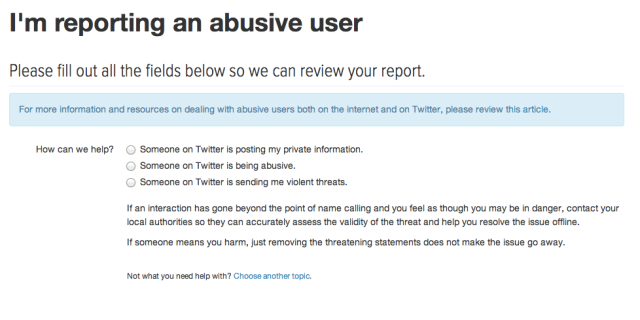Twitter’s recent #RestoreTheBlock kerfuffle raised the issue of how to handle abuse on the site. The Block, even after being restored, is still an ineffective tool for dealing with online abuse. If you’re being harassed on Twitter, Block is an option you have, but it’s not the only one. Here’s how to report abusive users.
First, this is what we mean when we say the Block is ineffective. If you have a public account, you CANNOT control who sees your tweets. The Block is an illusion of control that silences abusive users from your timeline, and you from theirs as long as they are logged into that blocked account. We’re using caps, bold, underline, and italics here more than we generally like to, because we want to be as clear as possible.
If you block someone on Twitter, you are just blocking their account. They can log out and still see your timeline. They can make a new account and still see your timeline. They can look on a friend’s account and still see your timeline. They don’t have to go to extreme measures to overcome the Block. It is incredibly easy for that person to still see your timeline, because your tweets are public. It’s delusional to think otherwise.
We noticed this option this morning, but it’s apparently been in place for a few months now. We never took too close a look at it before, but after the attention we gave #RestoreTheBlock on this site and our podcast, we think it’s worth exploring what tools are in place to help users deal with online harassment on Twitter.
If you are being harassed on Twitter, report the user. The option is under “more.” When you select it, you’re presented with three choices.

Report as spam, abuse, or a compromised account.
“Spam” is pretty straightforward, and the “Compromised” option is to help Twitter identify and deal with accounts that may have been hacked. When you select “Abusive,” you can further specify the type of abuse:

If someone is impersonating you on Twitter by claiming that they are you to mislead followers for whatever reason, you can report them with the “Impersonation” option. If you have trademarks that are being used without your permission, you can make claims for that as well. The “Harassment” option will ask you to further specify the type of abuse by giving you a form to fill out and a link to a post about dealing with online harassment:

Each of the three options under “How can we help?” brings up slightly different fields allowing you to fill out a form that lets you identify the person, one or more specific tweets, the type of harassment, and fields to further specify any other harassment. It is a much more comprehensive way to report abuse than simply blocking someone and pretending that it means they can’t read your tweets anymore.
(via Twitter, image taken from Twitter)
- We discussed #RestoreTheBlock on the latest episode of the Geekosystem Podcast
- Twitter turned the Block button into a Mute button, and user didn’t like it
- It took less than a day for Twitter to reverse the decision








Published: Dec 17, 2013 01:03 pm